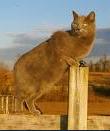By David Skinner, Slate.com
As Washington mopes to the end of a losing NFL season, the controversy over the team's name appears to have plenty of fight left. To the language hound, however, the most remarkable aspect of this dispute may be its lack of historical context.
(snip)
In 2005, the Indian language scholar Ives Goddard of the Smithsonian Institution published a remarkable and consequential study of redskin's early history. His findings shifted the dates for the word's first appearance in print by more than a century and shed an awkward light on the contemporary debate. Goddard found, in summary, that "the actual origin of the word is entirely benign."
Redskin, he learned, had not emerged first in English or any European language. The English term, in fact, derived from Native American phrases involving the color red in combination with terms for flesh, skin, and man. These phrases were part of a racial vocabulary that Indians often used to designate themselves in opposition to others whom they (like the Europeans) called black, white, and so on.
But the language into which those terms for Indians were first translated was French. The tribes among whom the proto forms of redskin first appeared lived in the area of the upper Mississippi River called Illinois country. Their extensive contact with French-speaking colonists, before the French pulled out of North America, led to these phrases being translated, in the 1760s, more or less literally as peau-rouge and only then into English as redskin. It bears mentioning that many such translators were mixed-blood Indians.
Half a century later, redskin began circulating. It was used at the White House when President Madison requested that various Indian tribes steer clear of an alliance with Britain. No Ears, a chief of the Little Osages, spoke in reply and one of his statements was translated as, "I know the manners of the whites and the red skins." Only in 2004, however, when the Papers of James Madison project at the University of Virginia reached the year 1812 did this and another use of redskin from the same meeting come to light.
The word became even more well known when the Meskwaki chief Black Thunder delivered a speech at a treaty conference after the War of 1812. Black Thunder, whose words were translated by an interpreter, said that he would speak calmly and without fear, adding, "I turn to all, red skins and white skins, and challenge an accusation against me."
In the coming years, redskin became a key element of the English-language rhetoric used by Indians and Americans alike to speak about each other and to each other. Goddard mentions numerous Indian speeches that were translated and printed in English-language newspapers. From such speeches, Goddard observes, James Fenimore Cooper almost certainly learned the word, which he then began using in his novels in the 1820s.
Goddard's paper methodically describes the term's early evolution, made possible by an unlikely abundance of documentation. "It is extremely unusual," he wrote, "to be able to document the emergence of a vernacular expression in such exact and elucidative detail."
Before all this recent scholarship, though, one could be forgiven for thinking redskin had emerged from hostilities with the white man. For many years the first citation in the Oxford English Dictionary was dated 1699 and purported to come from Samuel Smith. It read, "Ye firste Meetinge House was solid mayde to withstande ye wicked onsaults of ye Red Skins." It had been quoted from family papers in a book published in 1900 by Helen Evertson Smith.
But Goddard's research undermined this earliest of citations. First, he explains, Smith's words were "relentlessly antiqued"—made to appear older than they were. One giveaway was the use of ye, which was anachronistic for 1699. By investigating the underlying documentation Goddard further discovered a probable source for the quotation, bearing a different date and the word Indian, which Helen Evertson Smith had modified to redskin.
After Goddard, who serves as the OED's main consultant on Indian language and culture, published his paper, the Oxford editors changed the entry. The OED now says the quotation was "subsequently found to be misattributed; the actual text was written in 1900 by an author claiming, for purposes of historical fiction, to be quoting an earlier letter."
Another major source for confusion has been Suzan Harjo, the Cheyenne-Creek activist who was an early plaintiff in the long-running case against the NFL. She has said on numerous occasions that redskin originated in "the practice of presenting bloody red skins and scalps as proof of Indian kill for bounty payments."
Read the entire article here.
Subscribe to:
Post Comments (Atom)


























































No comments:
Post a Comment